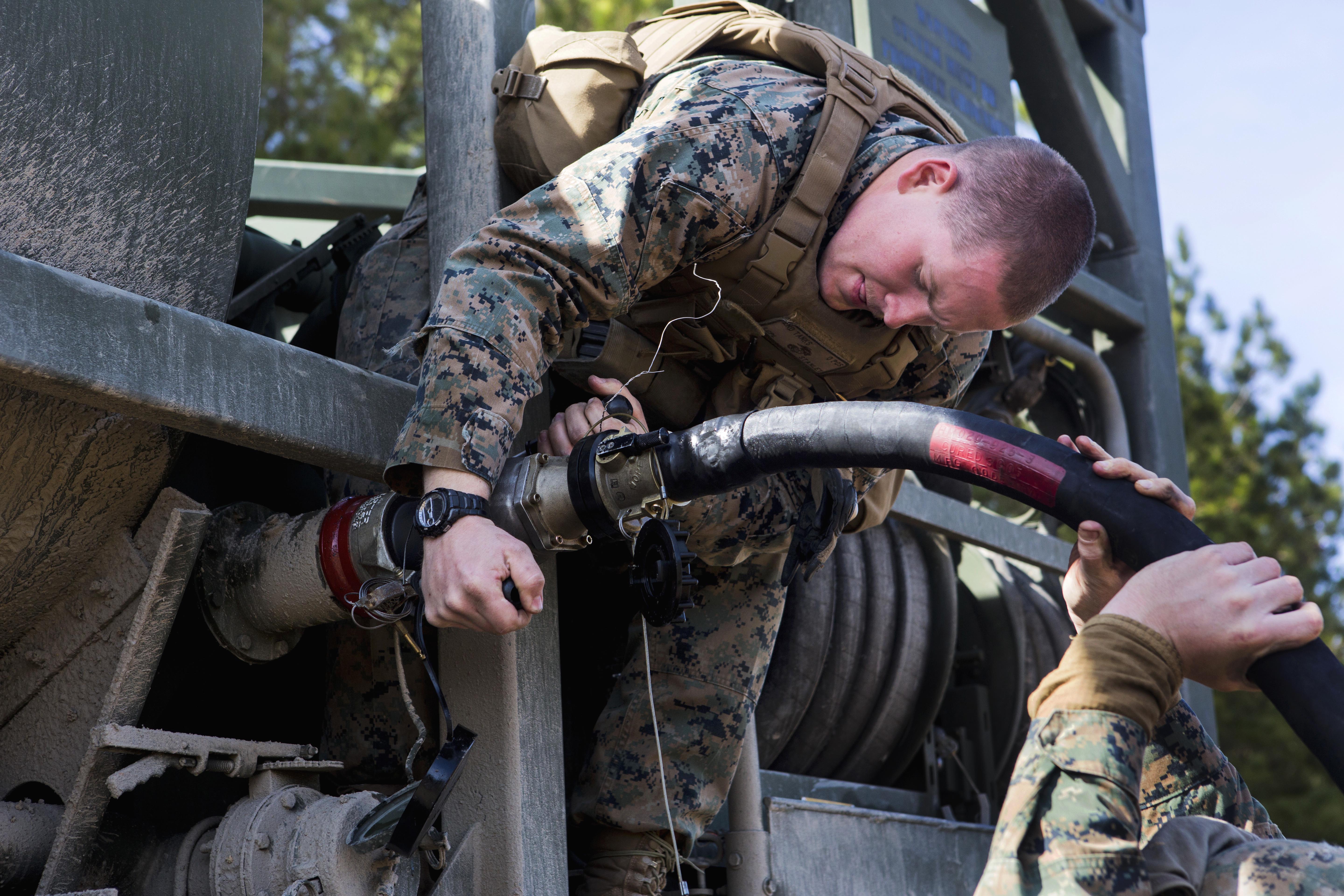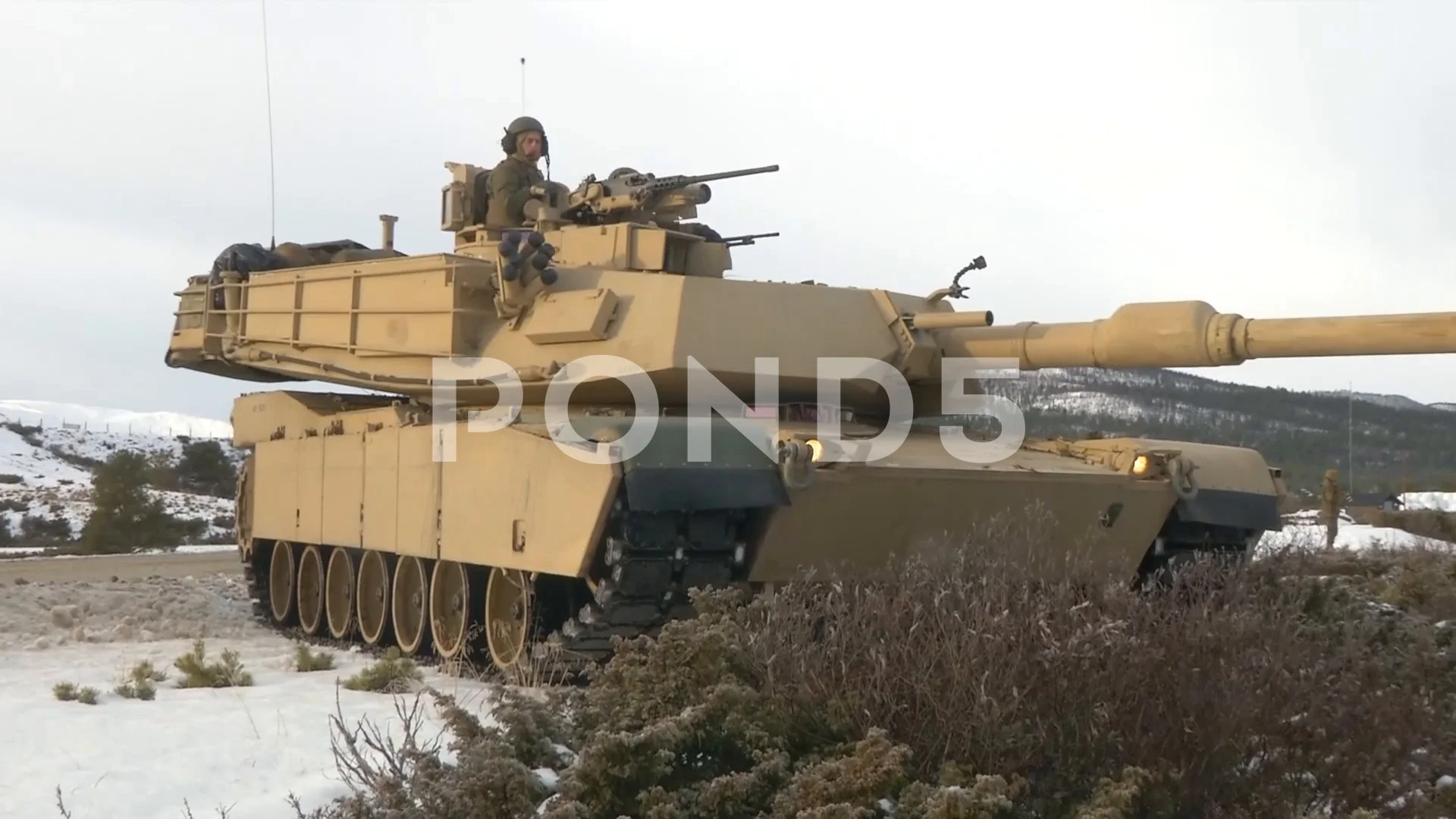2Nd Tank Battalion – To assist with the destruction of enemy armor, Captain Rose called for artillery support on the Germans’ suspected assembly area. While the 73rd Armored Field Artillery (AFA) was busy shelling suspected enemy assembly points, the Germans were busy bringing up their own artillery. After a brief shelling of Task Force Rose positions, the German guns placed a smoke screen in front of the American task force. After about 15 minutes the smoke cleared with no immediate action on the part of the Germans. The German reconnaissance battalion was still carefully feeling out this rather unexpected mix of enemy armor and infantry and had decided to wait for the arrival of the main body. At about 11 am, the first Mark IVs of the 2nd Battalion, 3d Panzer Regiment appeared.
Combat Command R, unlike its two sister combat commands within the 9th Armored Division, would not be given a chance to prove itself as an independent unit in combat. The decisions about where to place CCR’s individual components were to be made elsewhere— some by Maj. Gen. Norman Cota, commanding the 28th Infantry Division, some by his regimental or battalion commanders, and some even by the corps commander himself. Colonel Gilbreth would have very little independent command and control over his unit. CCR would be treated as a true reserve force from which units and men could be drawn as needed, a holding unit for a heterogeneous collection of troops and equipment. Colonel Gilbreth’s as yet untested command, within this framework of parceling, separation, and external control, was expected to stop the advance of a formidable Wehrmacht armored division.
2Nd Tank Battalion

Next, the Germans turned their attention to Task Force Harper near Allerborn. Although the advance elements of the German assault reached the southern roadblock in late afternoon it was not until after dark that the Germans launched their first major attack. In the opening onslaught, the Germans swept the first line of defense with machine-gun fire to clear out any infantry that might be protecting the tanks. After this, the Mark IVs and Panthers destroyed two tank platoons of Company C, 2nd Tank Battalion as well as a number of infantrymen being silhouetted by the burning vehicles. The German tanks were effectively aided by their infrared night-sighting devices with an effective range of 400 meters. By 9 pm, Task Force Harper ceased to exist as a unified, cohesive fighting unit. Lt. Col. Harper ordered the survivors to fight their way to Longvilly.
Advancing Through Smoke
Within minutes after the arrival of the its 2nd Battalion, 2nd Panzer artillery shelling started to pick up once again and another smoke screen was laid down in front of the Americans. This time it took nearly 90 minutes for the smoke to lift, and when it did the GIs of Task Force Rose discovered that the German panzers had moved to within 800 yards of their position and the Shermans were taking direct fire from approximately 16 German tanks. In addition to the direct fire coming from the German panzers, the infantry and Shermans of Task Force Rose were also coming under indirect fire from 88mm antiaircraft guns estimated to be about 2,500 yards to the east. The time was about 1 pm on December 18. According to Lauchert’s timetable, his reconnaissance battalion should have been in Bastogne well over an hour earlier.
Middleton conferred with his immediate boss, Lt. Gen. Courtney Hodges, commander of First U.S. Army. Hodges agreed with Middleton’s assessment, and on the morning of December 17, Hodges was trying to reach General Bradley to have the only two SHAEF (Supreme Headquarters Allied Expeditionary Force) reserve divisions left on the European continent, the 101st and the 82nd Airborne divisions, released to VIII Corps for the immediate defense of Bastogne. Almost immediately after speaking to General Hodges, General Bradley put in a call to General Dwight D. Eisenhower, the supreme Allied commander, requesting the release of the two reserve airborne divisions. It was not until 7 pm on December 17 that Eisenhower, reluctant to part with his last reserve divisions, gave permission.
Shortly after this initial engagement, four enemy tanks supported by infantry emerged from the woods just northeast of the American forward positions. A few minutes later an entire German tank column barreled down on Task Force Rose from the north. The enemy tanks first turned their guns on Task Force Rose’s armored infantry posts, forcing the infantrymen to withdraw to the Shermans. As the lead panzer came into view, it was turned back by fire from the American tanks.
General Manteuffel had planned that Bastogne would be taken on the first day of the offensive. Although unexpected stiff pockets of American resistance had delayed Bastogne’s capture by at least a full day, all was far from lost. Manteuffel and Luttwitz believed that the two airborne divisions would reach Bastogne either during the night of December 18 or early on the 19th. Once Luttwitz’s XLVII Panzer Corps crossed the Clerf, Bastogne could be reached no later than midday of the 18th, thus allowing German command and control the use of its vital road network.
The Retreat To Bastogne
“Remember that our tanks were just weapon systems,” Capt. Mark Rothrock, commander of Alpha Company, 4th Tank Battalion said when the unit deactivated on Friday. “[Tanks are] a damn fine weapon system, but nonetheless, just equipment. You individual Marines were always the key to the company’s success.”

Cell is the name of the village where the Germans stopped and walked back to Germany. My mom worked for American Red Cross, were she met my father an American Engineer. I was born in Dinant, Belgium.
With its primary mission now canceled with the destruction of Task Force Harper, Team Booth weighed its options of either defending in place or heading for Bastogne. Lt. Col. Booth’s outposts had reported the presence of enemy armor on the Bourcy-Noville road and a platoon of the 52nd AIB discovered enemy units to the west, northwest, and south. Based upon all available information, Booth estimated that his team was up against at least one armored division. On the morning of December 19, Booth decided to move what was left of his team plus about 100 stragglers, even a few from the 106th Infantry Division, to Bastogne.
Since the primary mission of the Fifth Panzer Army was to reach and cross the Meuse River by day three of the offensive in flank support of Sixth SS Panzer Army’s drive to capture Antwerp, the 2nd Panzer and the Panzer Lehr Divisions were to rapidly move beyond Bastogne regardless of who held it.
The Collapse Of Task Force Harper
These retreating soldiers and tankers were not, despite some postwar accounts, a bunch of dispirited, demoralized, and undisciplined panic mongers. The great majority of these men had given it their all. They came through the 101st defensive lines having had very little sleep or food for three days and in almost constant battle with an enemy that not only had the full advantage of surprise but was also far superior in numbers, the quantity and quality of its armor, and in its battle experience. The personnel of CCR, 9th Armored Division who managed to make it to Bastogne and regroup were able to assist the 101st Airborne Division by acting as either mobile emergency relief strike forces, armored support for the lightly armed paratroopers, or direct infantry augmentation to the defense line.
Middleton, believing that he would eventually be granted the two reserve divisions, still had one major problem: how to slow down the German advance long enough to allow for the arrival and deployment of the paratroopers. Aside from a couple of engineer units, Middleton had only one combat unit in reserve and that was the newly arrived and untested 9th Armored Division. Moreover, because of the breadth of the German assault he could not even use the entire division in the Bastogne sector. CCB of the 9th Armored was immediately needed in St. Vith to shore up the 106th Infantry Division, while CCA was badly needed in the Wallendorf-Echternach area to support the 4th Infantry Division. Essentially, the only uncommitted combat unit he had left was CCR of the 9th Armored Division.
Marines with 1st Tank Battalion recently watched the last of their unit’s tanks depart Twentynine Palms, California. Photos taken of the event show Marines surrounding an oversized flatbed as the tanks were loaded up onto the vehicle and driven away.
Control of Bastogne would not only ensure an easier and swifter advance toward the River Meuse but would also ensure firmer control of the entire southern Ardennes region. Although the plan called on German armor to bypass Bastogne should immediate capture prove unfeasible, investment would still tie down German forces needed elsewhere. In addition, an American occupation of Bastogne would provide Allied forces with a base from which to hamper the German flanks and rear as well as cause major resupply problems for Luttwitz’s fuel-hungry tanks. The Germans did not expect this to happen.

Task Force Rose Task Force Harper And Team Booth
Bastogne lay in the sector of advance that Manteuffel assigned to XLVII Panzer Corps and its commander, General Heinrich von Luttwitz. General Luttwitz’s corps consisted of the 2nd Panzer Division, the Panzer Lehr Division, and the 26th Volksgrenadier Division (VGD) with the added strength of the 15th Volks Werfer (rocket launcher) Brigade, the 766th Volks Artillery Corps, the 600th Army Engineer Battalion, and the 182nd Flak Regiment.
After the war, General Manteuffel wrote: “On the whole the delaying action of the withdrawing American Army was a success. It slowed down the German advance, though it could not prevent the pursuing German spearheads from coming within 4 km from the Meuse near Dinant without any major engagements. But the resistance by delaying actions gained the time needed to bring up their tactical reserves at the correct moment.”
Captain Meier’s force, like most of CCR, 9th Armored and 28th Infantry Division soldiers and tankers retreating from the roadblock battles, eventually made it to Bastogne. However, many other retreating soldiers never made it, having fallen to the gauntlet of sporadic enemy artillery fire, snipers, and engagements with concealed enemy infantry and tanks. Men and armor retreating into Bastogne from the battles that preceded the arrival of the 101st Airborne Division continued to stream in throughout the day with valuable information concerning German deployment and strengths.
Secure .gov websites use HTTPS
A lock
(LockA locked padlock)
or https:// means you’ve safely connected to the .gov website. Share sensitive information only on official, secure websites.
Reorganizing The Defensive Line
Harper, finding his way to Longvilly blocked, headed cross country with an assault gun platoon in the direction of Houffalize where, along the way, he met up with a retreating body of Task Force Rose tanks and soldiers directed by a Lieutenant DeRoche. Harper ordered five of DeRoche’s Shermans to remain with him and sent DeRoche with what was left to St. Hubert for fuel and ammunition. Harper next tried to set up a defensive line at Houffalize to stop the Germans and during the night engaged the forward elements of the 116th Panzer Division. In the ensuing battle, Harper was killed and his scratch force of armor and infantry cut to pieces.
His personal decorations include the Distinguished Service Medal, Defense Superior Service Medal, Legion of Merit (with one gold star), Defense Meritorious Service Medal, Meritorious Service Medal with two gold stars, the Navy/Marine Corps Commendation Medal with three gold stars, the Navy/Marine Corps Achievement Medal, and the Combat Action Ribbon.
Manteuffel’s instructions to Luttwitz were direct: “Panzer Lehr Division holds itself ready to advance by order of the corps following behind the 26th VGD by way of Gemund-Drauffeld toward Bastogne and the Meuse in the sector of Namur-Dinant. It is essential for the division to take up positions … close to the 2nd Panzer Division advancing over Noville. In the case of strong enemy resistance, Bastogne is to be outflanked, its capture is then up to the 26th VGD….”

31 Aug 2015 |
Cpl. Ryan Young
II Marine Expeditionary Force
Nd Tanks Maneuvers Through Training
Less than two weeks later, Alpha Company, 4th Tank Battalion, held a deactivation ceremony at Camp Pendleton, California. The unit is the first of several companies with 4th Tanks facing deactivations this summer, Maj. Roger Hollenbeck, a spokesman for Marine Forces Reserve, said.
Lt. Gen. Eric Smith, the head of Marine Corps Combat Development Command, is overseeing many of the Force Design 2030 changes. Tanks leaving the Marine Corps, Smith told Military.com in May, could be sold to foreign militaries or to the Army. The Marine Corps could also sell their parts or store the vehicles, he said.
Also, within hours of the division’s commitment to battle, it was appointed a new commander, Colonel Meinrad von Lauchert. The German high command felt that its former commander, General Henning Schonfeld, lacked the aggressive spirit required for the forthcoming offensive. A half hour prior to the launching of the Ardennes offensive, Colonel Lauchert received a personal phone call from Hitler instructing him that in directing his forces, “The battle must be fought with brutality and all resistance shall be broken in a wave of terror.”
Three infantry divisions, the 28th, 4th, and 106th, comprised VIII Corps. The 28th and the 4th had been severely mauled in the bloody battles of the Hürtgen Forest. The 106th Infantry Division was newly arrived at the front, replacing the 2nd Infantry Division, and had yet to see combat. The three VIII Corps infantry divisions were responsible for an approximate 88-mile front that was just about three times that normally assigned an equivalent defending force. Although the Germans were on the ropes and expected to capitulate soon, General Middleton still worried about the thin spread of his on such a wide front.
“Don’t Worry Troy They Won’t Come Through Here”
“They were of massive value, I mean huge value, in the past,” he said. “I used them in and around Ramadi and in and around Fallujah [in Iraq]. They’ve paid their dues in blood. These are Marine warriors from the Korean War until now.
The changes are part of an aggressive plan the Marine Corps’ top general set in place earlier this year called Force Design 2030. The plan, leaders say, will set Marines up for future fights, defending ships while at sea and operating in hotly contested spots near the shore.

Lieutenant DeRoche, after turning five of his Shermans over to Lt. Col. Harper, led his small force toward St. Hubert where they found supplies of fuel and ammunition. After stocking up, the DeRoche force proceeded to Neufchateau where General Middleton had relocated his command post. Once in Neufchateau, DeRoche located Captain Walter M. Meier, who was busy gathering and regrouping retreating CCR men and armor. After acquiring DeRoche’s small force and a few others, Captain Meier called 9th Armored Division headquarters in Mersch and received permission to take his force into Bastogne.
Official websites use .gov
A .gov website belongs to an official government organization in the United States.
By Charles Gutierrez
The 116th Panzer Division logs for this date report a number of skirmishes with American armor. Just after midnight, in a message to its corps headquarters, 116th Panzer reported heavy resistance and the taking of prisoners from the American 52nd Armored Infantry Battalion. Although the 116th Panzer Division was making progress against stiff and unexpected opposition, its corps headquarters was unhappy with its slow progress and the commanding general of the 116th Panzer was instructed to assume personal leadership of his advance elements. The corps commander informed his division commander that the order came down from the highest level of command.
When General Omar Bradley, 12th Army Group commander, visited Middleton at his headquarters in Bastogne, Middleton expressed concern about the overall defensive situation, only to be told, “Don’t worry Troy, they won’t come through here.” Middleton replied, “Maybe not, Brad, but they’ve come through this area several times before.” To help assuage his fears, General Bradley provided VIII Corps with the newly arrived 9th Armored Division.
The Marine Corps Reserve, Hollenbeck said, has created a team to help provide any Marines affected by unit deactivations or other changes information on career options. Those options include lateral moves into other fields or transfers to other military branches.
BGEN Nally is a 2004 graduate of the Industrial College of the Armed Forces with a concentration in Information Strategy. Following this assignment, he served from 2004 until 2006 as the Deputy Director for C4, United States Central Command where he deployed twice in support of OIF/OEF. In 2006, BGEN Nally was transferred to Camp LeJeune, NC, where he served as the II MEF AC/S G-6 and subsequently as the II MEF Chief of Staff. From 2007 until 2009, he served as the Commanding Officer, Marine Corps Communications-Electronics School in 29 Palms, CA, and as the AC/S, G-6, MCAGCC/MAGTF-TC. He is currently serving as the Chief Information Officer for the U.S. Secret Service.
Bastogne Key To The Southern Ardennes
2nd tank battalion usmc, 2 battalion 2nd marines, 2nd tank bn, tank battalion size, 2nd marine tank battalion, ww2 us army tank battalions, 2nd tanks usmc, us tank battalion organization

Emma Nehls is a military writer and historian with a passion for exploring the intricacies of warfare and the human experience within the military. With extensive knowledge and a deep understanding of military strategy, tactics, and historical contexts, Nehls brings a unique perspective to his writings.